The big stone farmhouse we’re looking after in rural France may be the oldest building we’ve ever lived in. The earliest part, originally a combination of living spaces and barn, dates back to the 1500s. That’s according to the owners, a British couple who have lived here for many years. They delighted in informing us that the house is older than our country.
The stone that the house is made of may have come from some much older buildings. If you walk for half an hour up the road from here, you reach the summit of a 700-meter (2,300-foot) hill called Dun, which offers beautiful views in all directions. It was the site of a fortified settlement that was destroyed by a besieging army in 1181. Today, all that remains of the settlement is its Romanesque chapel, which was rebuilt in the late 1800s. Looking down at the countryside around Dun, it’s easy to wonder how many of the stone houses, barns, and churches that dot the landscape are made of materials from the ruins of the old walled fortress. (Why quarry new stones when you can cart usable ones down from the top of the hill?)
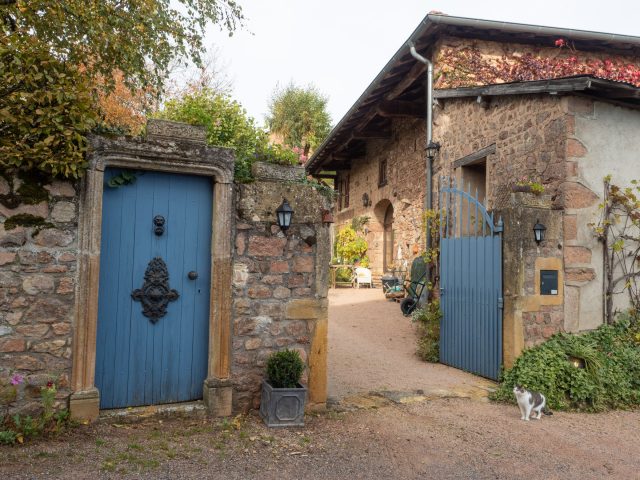
Our house consists of two stone buildings of different ages that were eventually joined to form a single two-story, L-shaped structure. The kitchen is located in what used to be a big (perhaps community) bread oven. In the stone hearth between the kitchen and the dining room, you can still see the half-moon-shaped opening that led into the enormous oven. Recently we went to an autumn festival at an old manor house in a nearby town. There, we watched people baking bread in the old oven, and we got a better idea of what ours must have looked like a few hundred years ago.
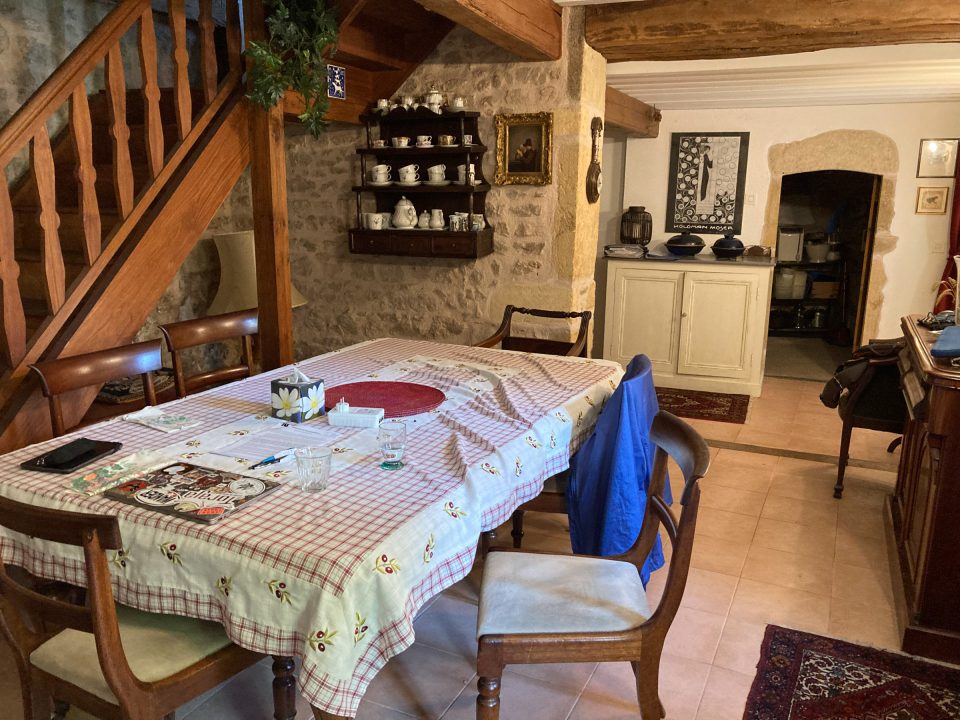
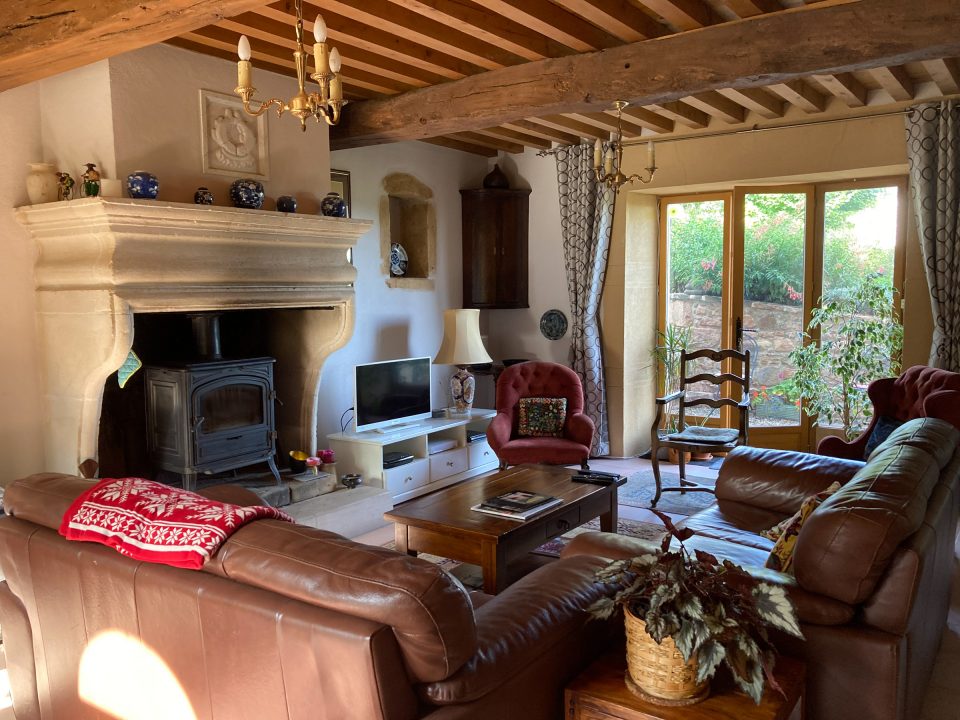
The owners have renovated the house extensively, modernizing the kitchen and bathrooms and adding windows to let in more light. The downstairs rooms are cozy and have the feel of a cottage, with low, beamed ceilings and walls of exposed stone or white-washed plaster. Our bedroom upstairs is bright and airy, with a view over the beautiful green countryside. When the time and angles are right, we can see the sunrise or moonrise from our bed.
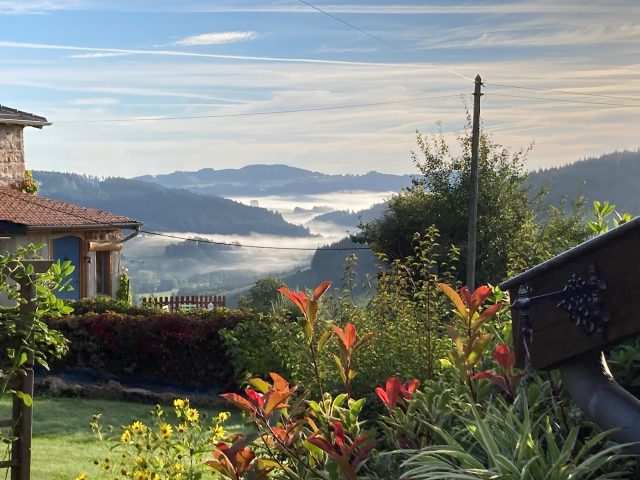
On the inside of the L, there’s a cobblestone courtyard full of flowers. Vines and roses climb the sides of the house, and small birds flit around in the trees and shrubs. It’s a pretty place to lounge in the sun when the weather is warm enough.
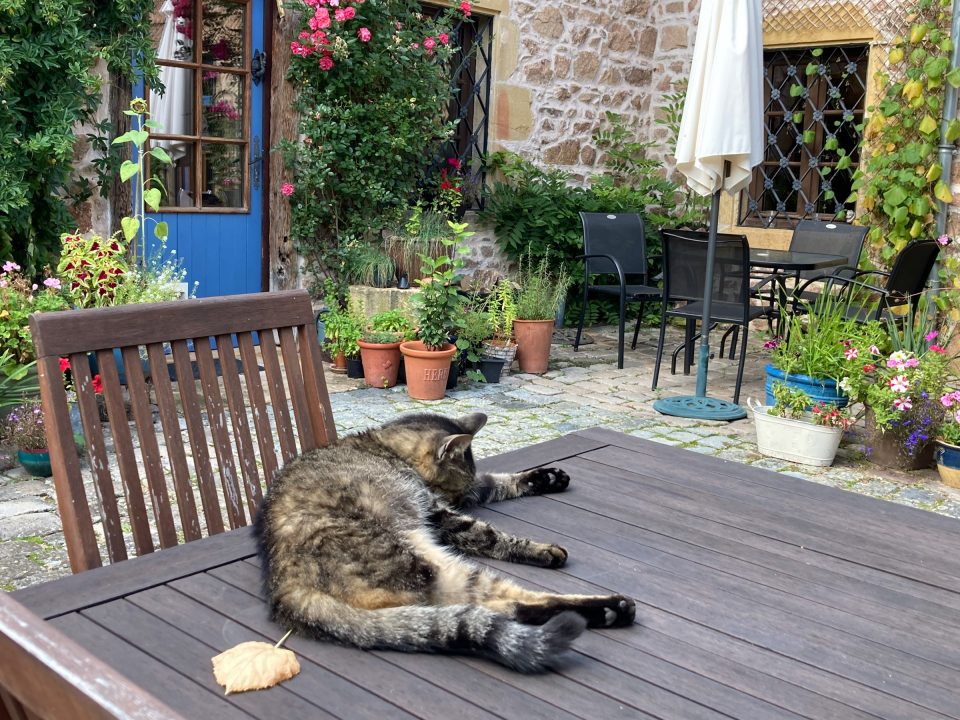
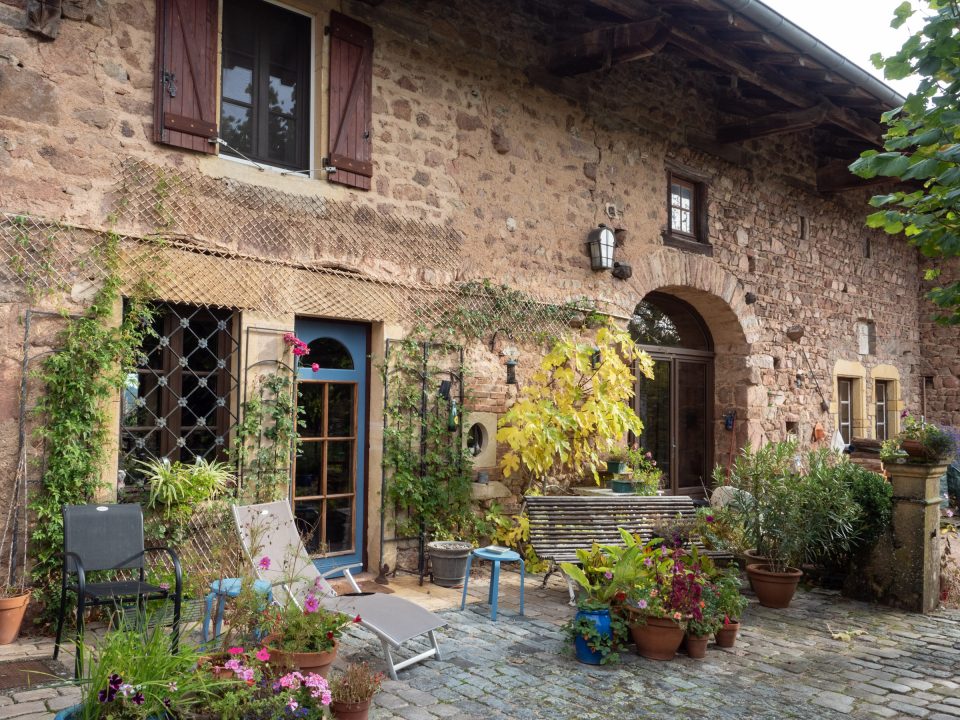
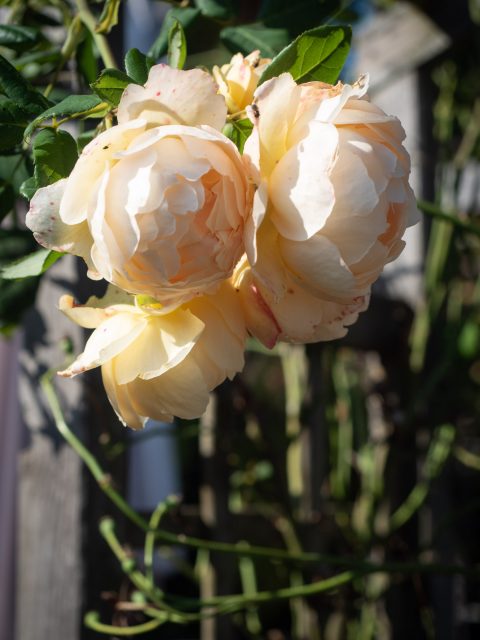

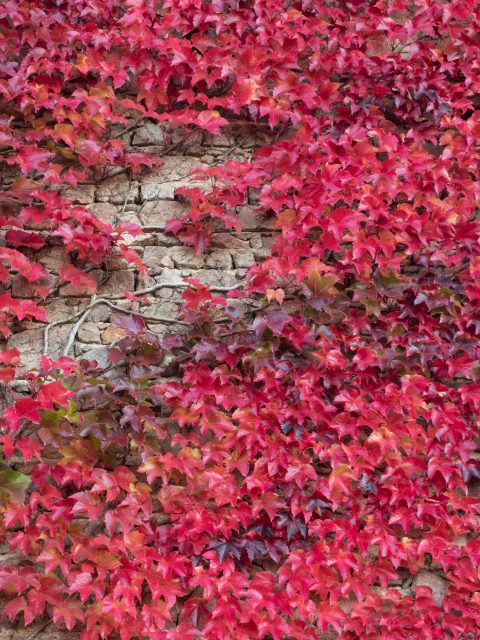
Living in an old stone farmhouse has its quirks. There’s no central heating, just wood stoves built into what were the two main hearths (in the living room and between the kitchen and dining room). To keep warm, we wear lots of layers. I also build a fire every morning and evening in whichever part of the house we’re using at the time.
There’s wifi, but the thick stone walls dampen the signal. We’ve found that the signal strength varies from room to room, and even from one end of the dining table to another! And although the house is modernized and clean, there are still a lot of spiders hanging out in the corners. Little ones are allowed to stay; bigger ones get escorted back outside or sucked up with the vacuum cleaner.
Our days start at little after sunrise (about 8 a.m. this time of year, blessedly) with feeding the three cats and then going out to the yard to open the hen house, scatter feed for the four chickens, and collect their eggs. After that, it’s pretty normal stuff for us: working, doing house and yard chores, doing yoga, taking walks around the neighborhood, and going into town to run errands. On nice days, Melissa sketches or paints somewhere nearby, or we take day trips to visit pretty towns or historical sites or to try out new restaurants. Those are all chances to practice using my rusty French.
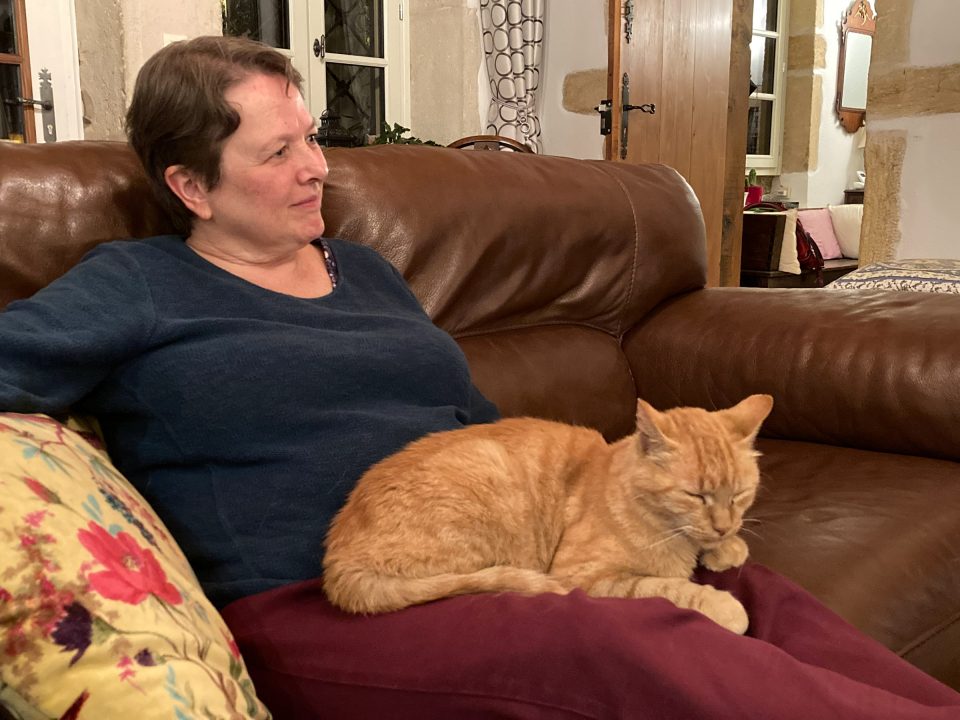
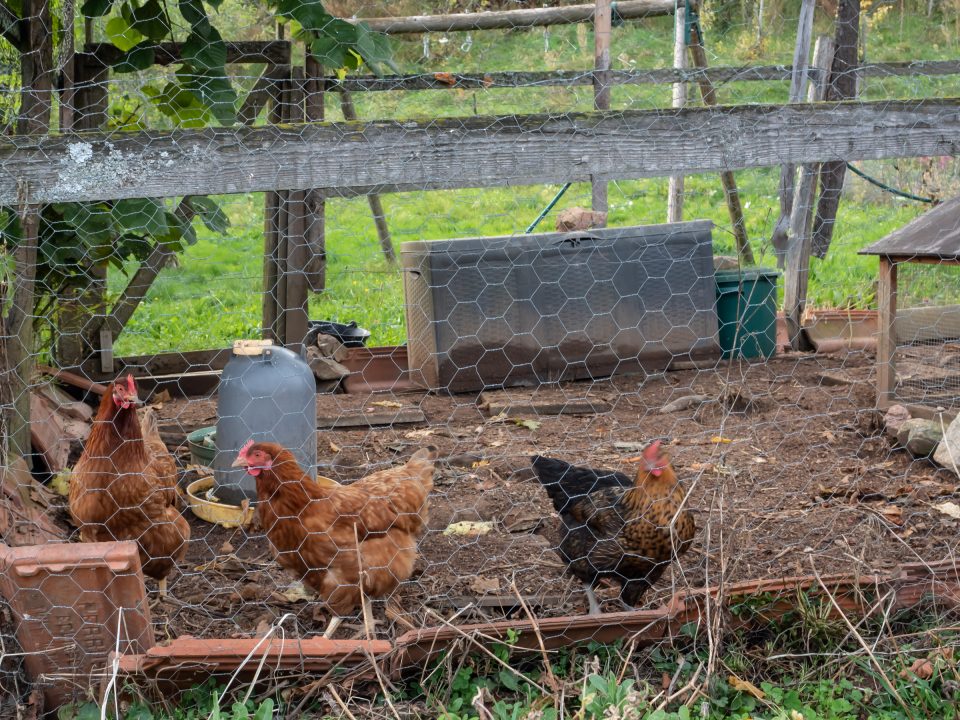
At night, after we lock the hens in their coop to protect them from predators, we retire to the cozy living room. Warmed by the wood stove, we curl up on the sofas (usually accompanied by one or two cats) to watch TV, knit, do jigsaw puzzles, and the like. It’s a quiet life, but a very pleasant one. The fact that there are a few other houses close around us, including one neighbor who speaks English, means that we can enjoy the peacefulness and beauty of being in the countryside without feeling isolated.
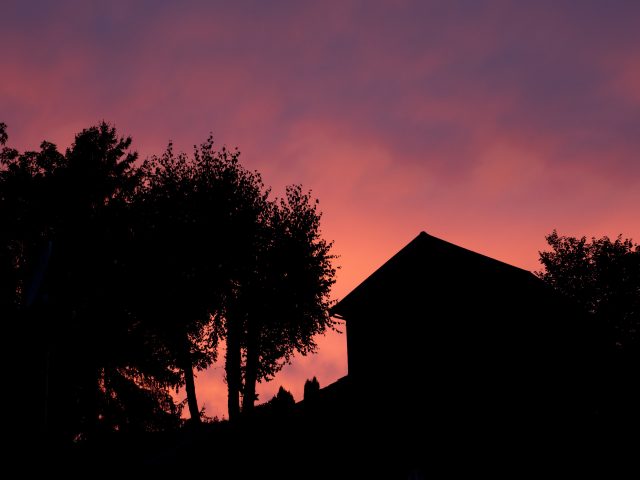
What a stunningly beautiful site. Life there sounds very pleasant, indeed.
Wow. Thank you. That just sounds too good to be true, but I believe you! I love how you guys manage to build the life you want.